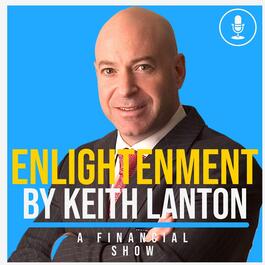
Wall Street's Annual Jitters: How to Survive September
September 2, 2025 | Season 7 | Episode 32 September has historically been Wall Street"s most challenging month, with the S&P 500 declining 56% of the time by an average of 1.17% since 1927. As we navigate this traditionally difficult period, several key events could significantly impact market performance – most notably the Federal Reserve"s September 17th meeting, where there"s currently a 90% probability of a 25 basis point rate cut. The upcoming August jobs report (September 5th) will be closely watched as a barometer of economic health and a potential influence on Fed policy. With expectations set at just 92,000 jobs added – better than July"s disappointing 73,000 but still reflecting sluggish growth – the market"s reaction may be tempered if these low expectations are already priced in. Similarly, producer and consumer inflation data (September 10-11) will provide critical insight into whether inflation pressures are easing enough to justify rate cuts. Looking beneath surface-level valuations reveals an interesting market dynamic: while the S&P 500 trades at a seemingly expensive 22-23 times forward earnings, this is heavily skewed by the "Magnificent Seven" tech stocks trading at 29 times earnings. An equal-weighted version of the S&P 500 trades at just 17.2 times earnings – roughly in line with historical norms. This suggests potential opportunities beyond the largest tech companies that have dominated performance. For individual investors, it"s worth considering what you"re up against when making short-term trades. Institutional players like Citadel Securities – which handles 25% of all US equity trades and 35% of retail flows – employ 260 PhDs analyzing over 100 terabytes of data (more than the entire Library of Congress). The alternative data market, where firms collect information on everything from truck movements to store foot traffic, represents a $3.3 billion annual investment by hedge funds seeking an edge that individual investors simply cannot match. As we approach year-end, significant changes to charitable giving tax rules should factor into your planning. Those who don"t itemize might benefit from waiting until 2026 when new deductions become available, while itemizers may want to accelerate donations into 2025 before new limitations take effect. For the most tax-efficient giving, consider donating appreciated securities directly to charities – potentially saving thousands compared to selling assets and donating cash. What"s your strategy for navigating September"s historical challenges? Are you preparing for potential buying opportunities if markets weaken, or taking a defensive stance until the traditionally stronger November-December period? ** For informational and educational purposes only, not intended as investment advice. Views and opinions are subject to change without notice. For full disclosures, ADVs, and CRS Forms, please visit https://heroldlantern.com/disclosure ** To learn about becoming a Herold & Lantern Investments valued client, please visit https://heroldlantern.com/wealth-advisory-contact-form Follow and Like Us on Youtube, Facebook, Twitter, and LinkedIn | @HeroldLantern
From "Enlightenment - A Herold & Lantern Investments Podcast"


Comments
Add comment Feedback